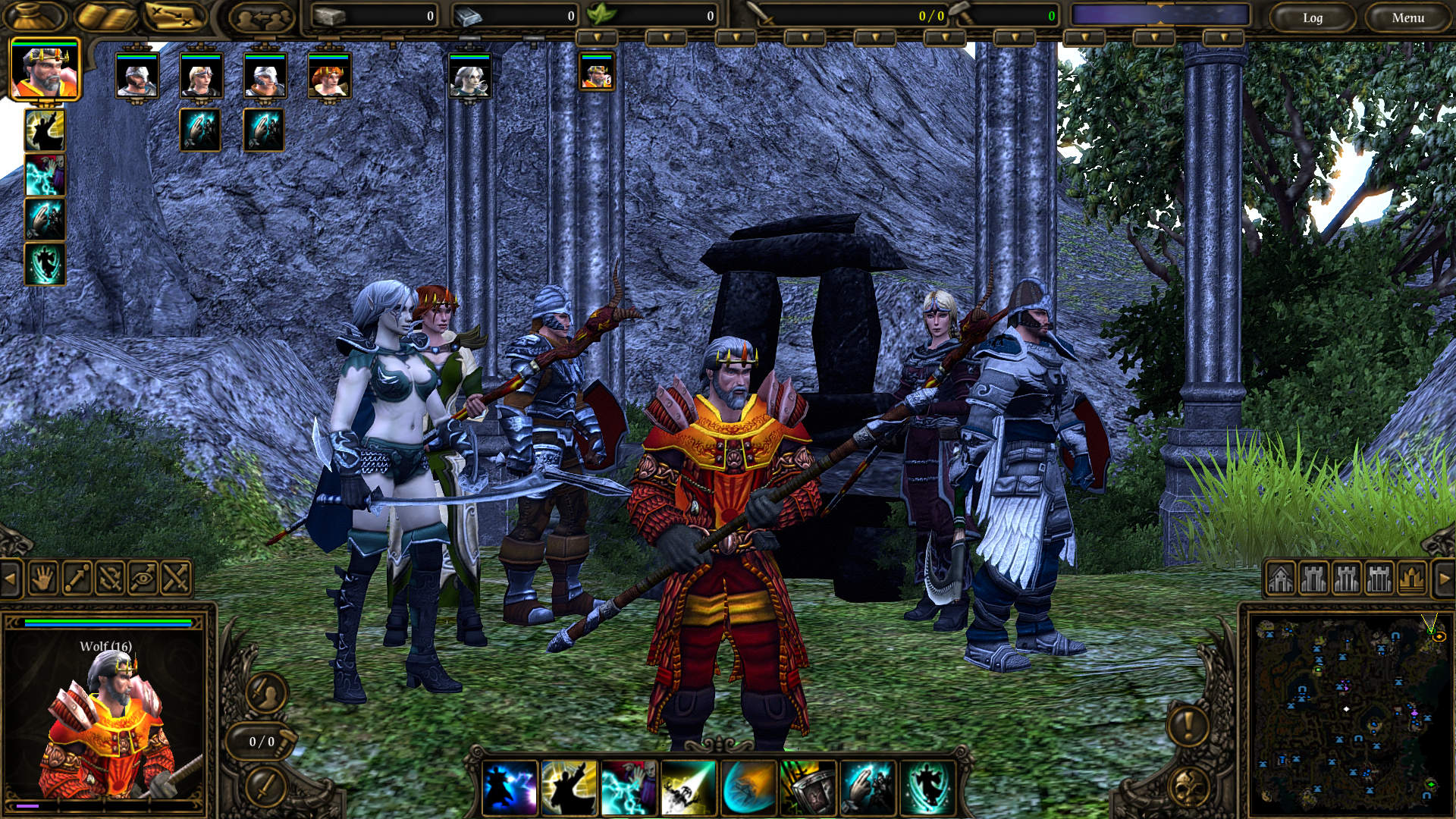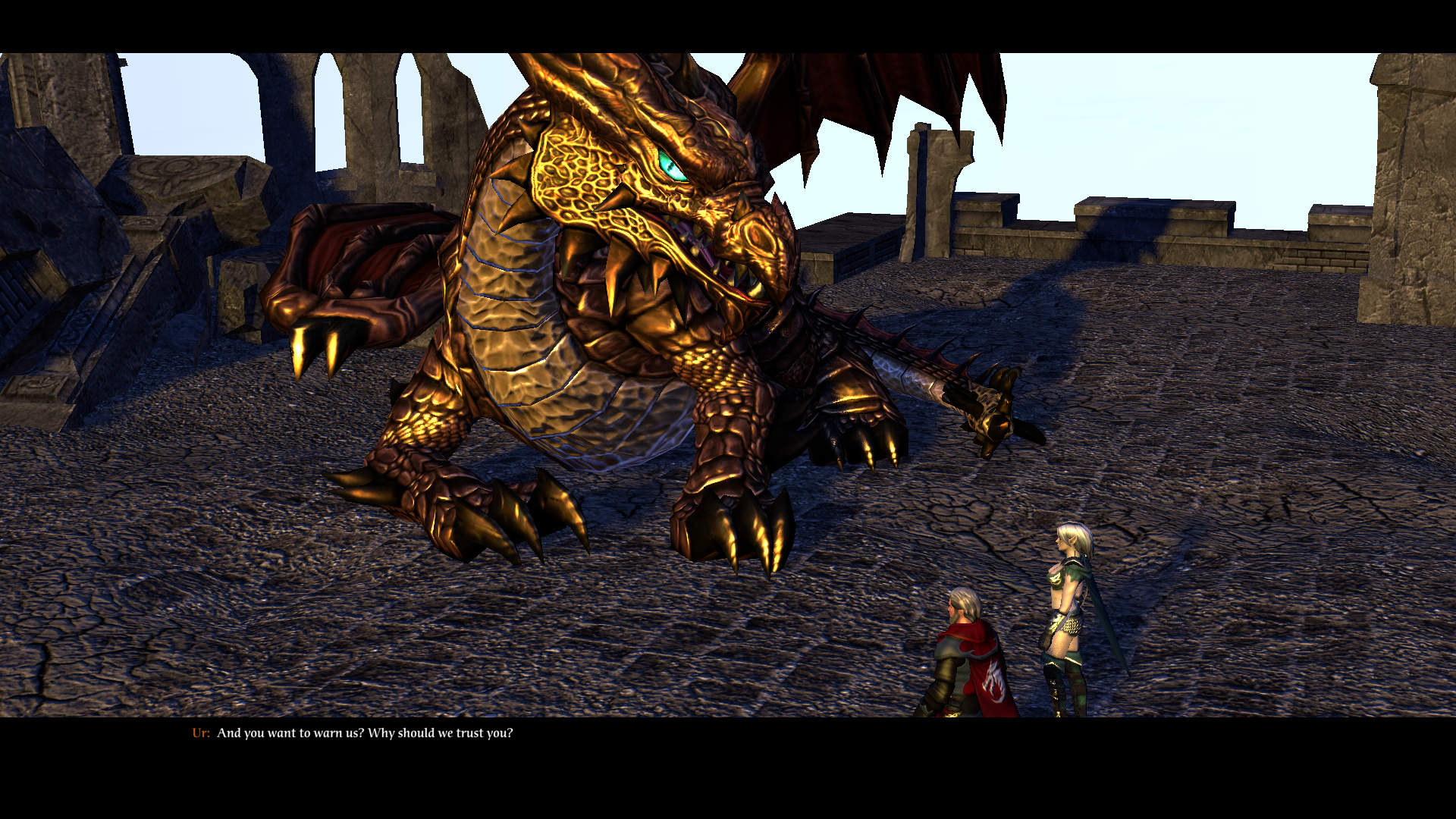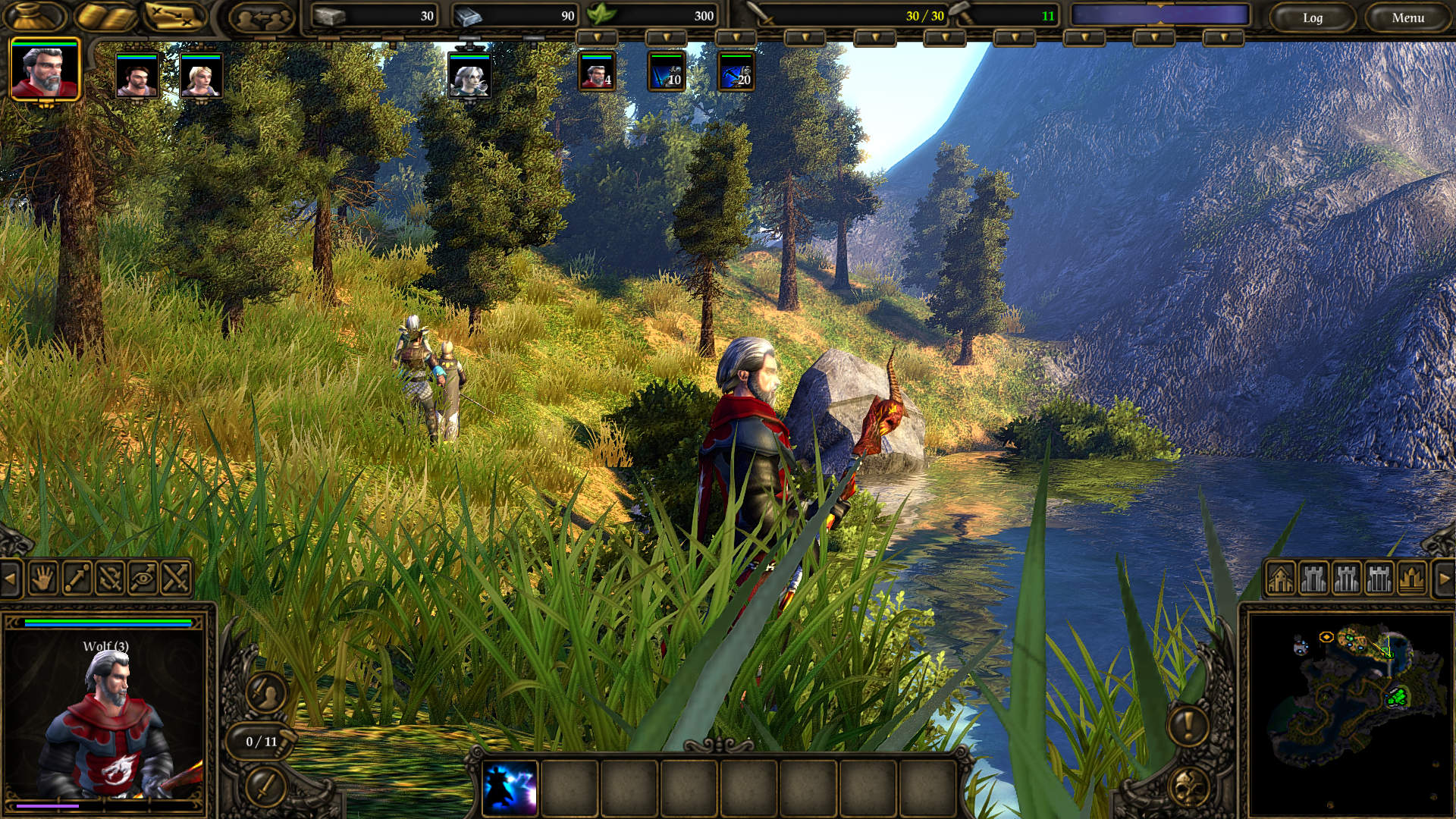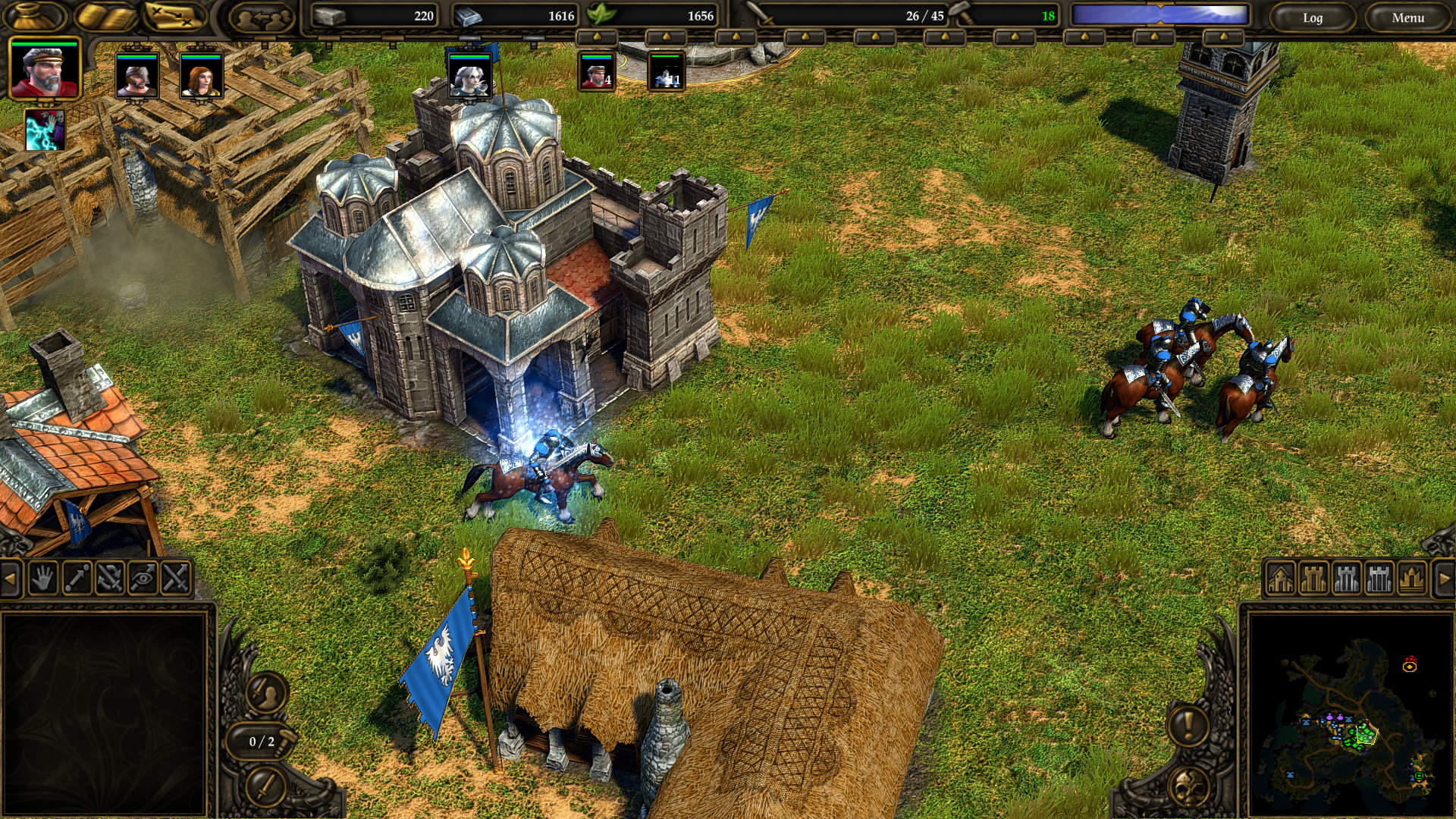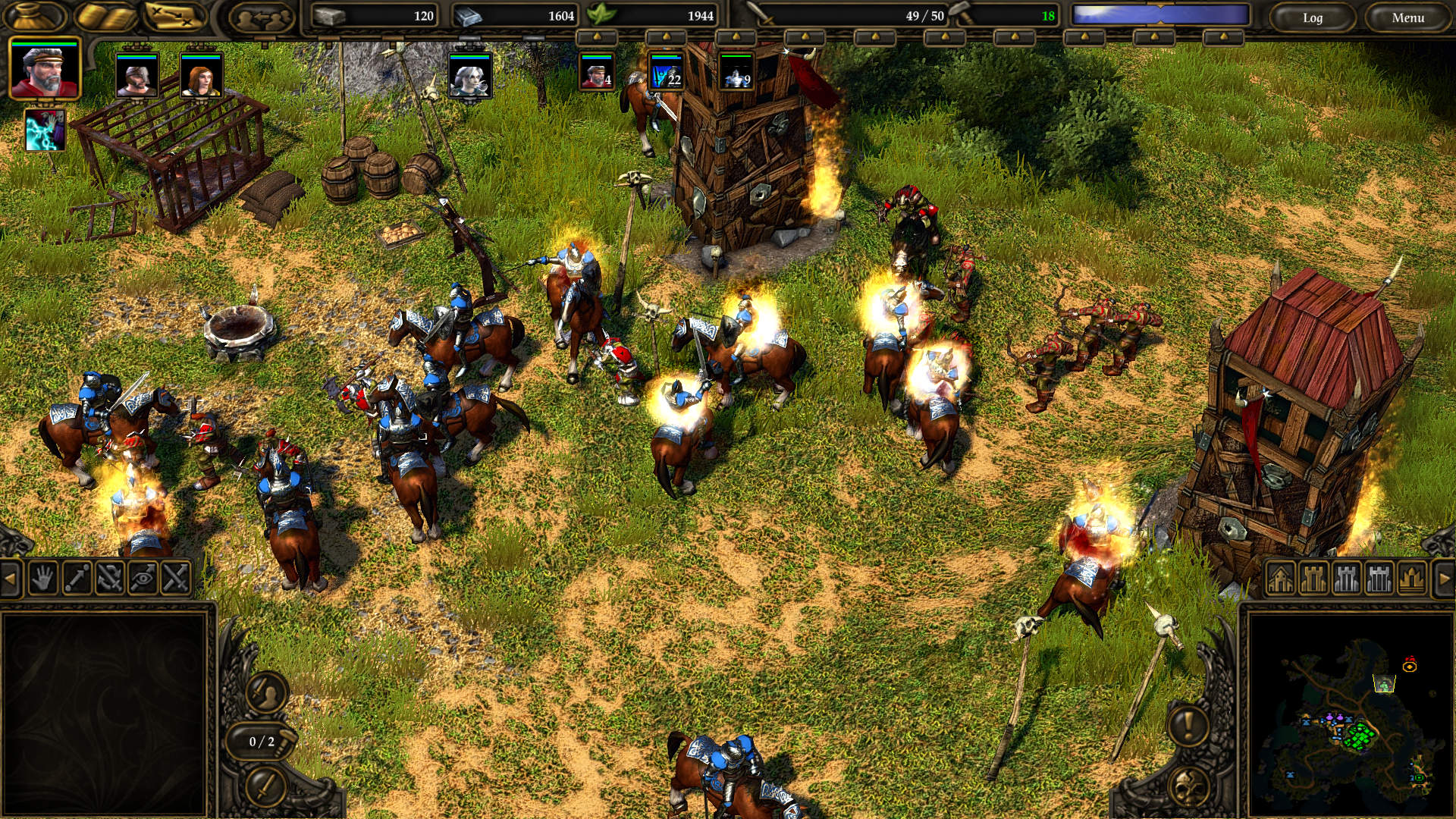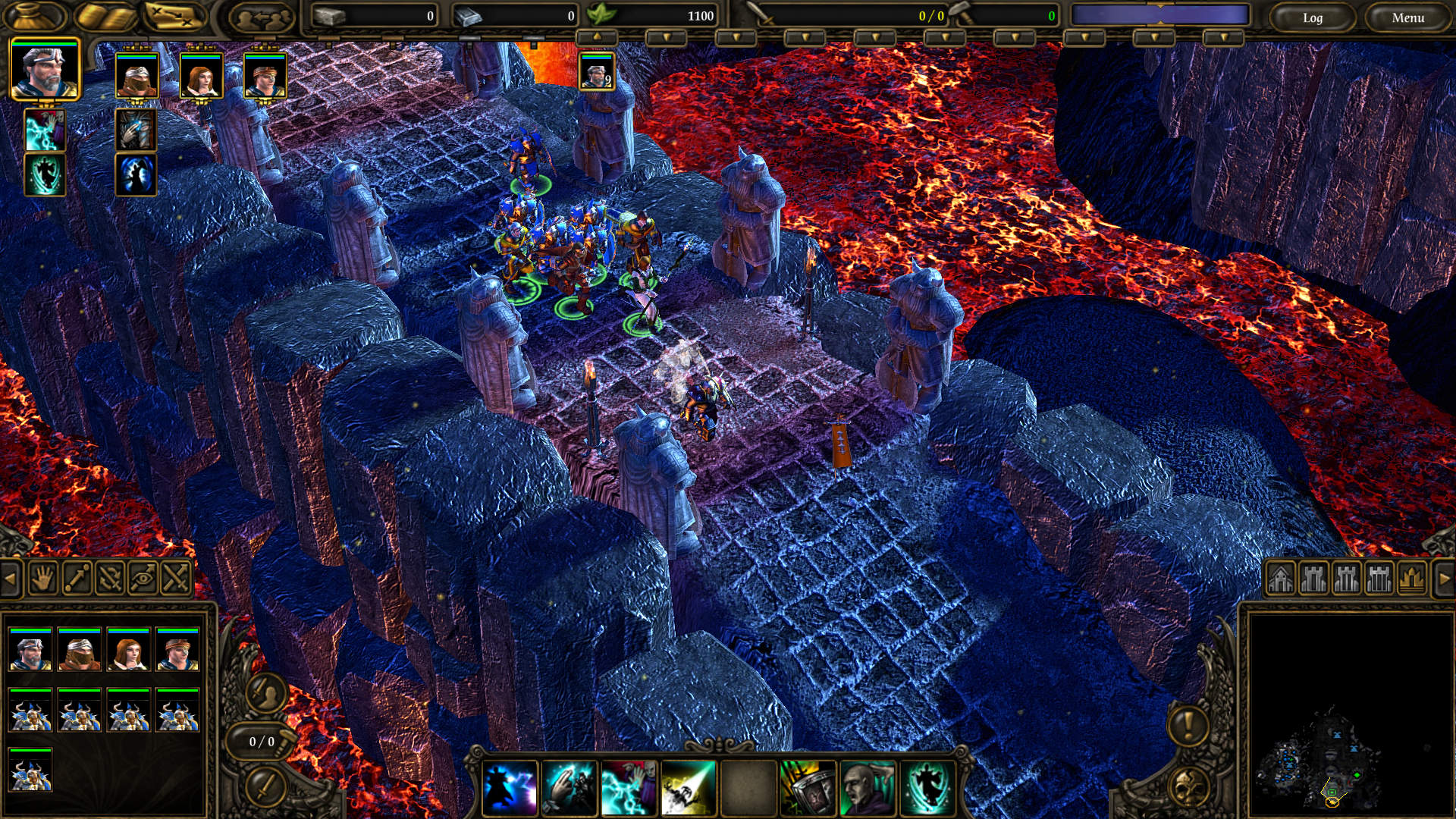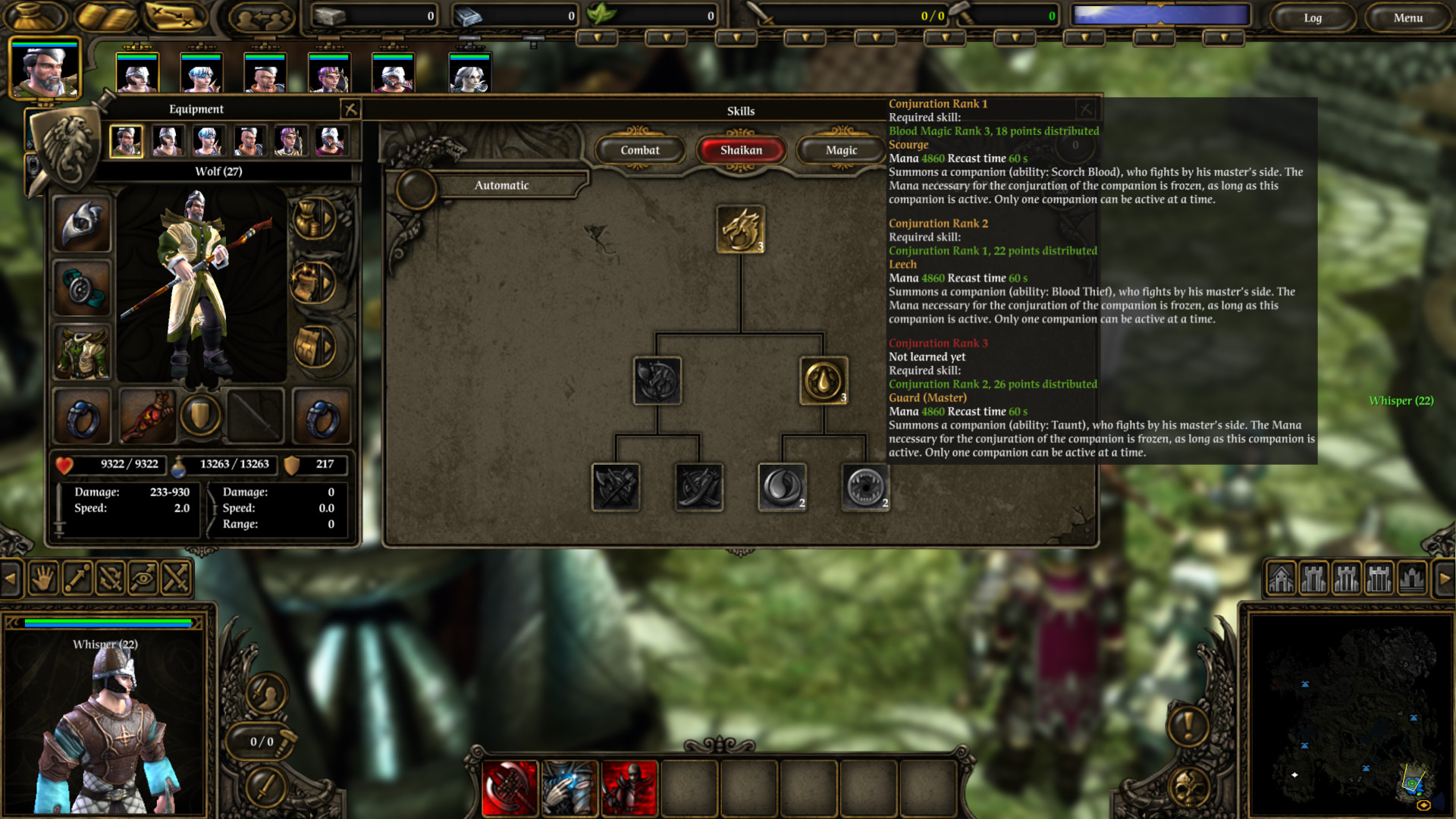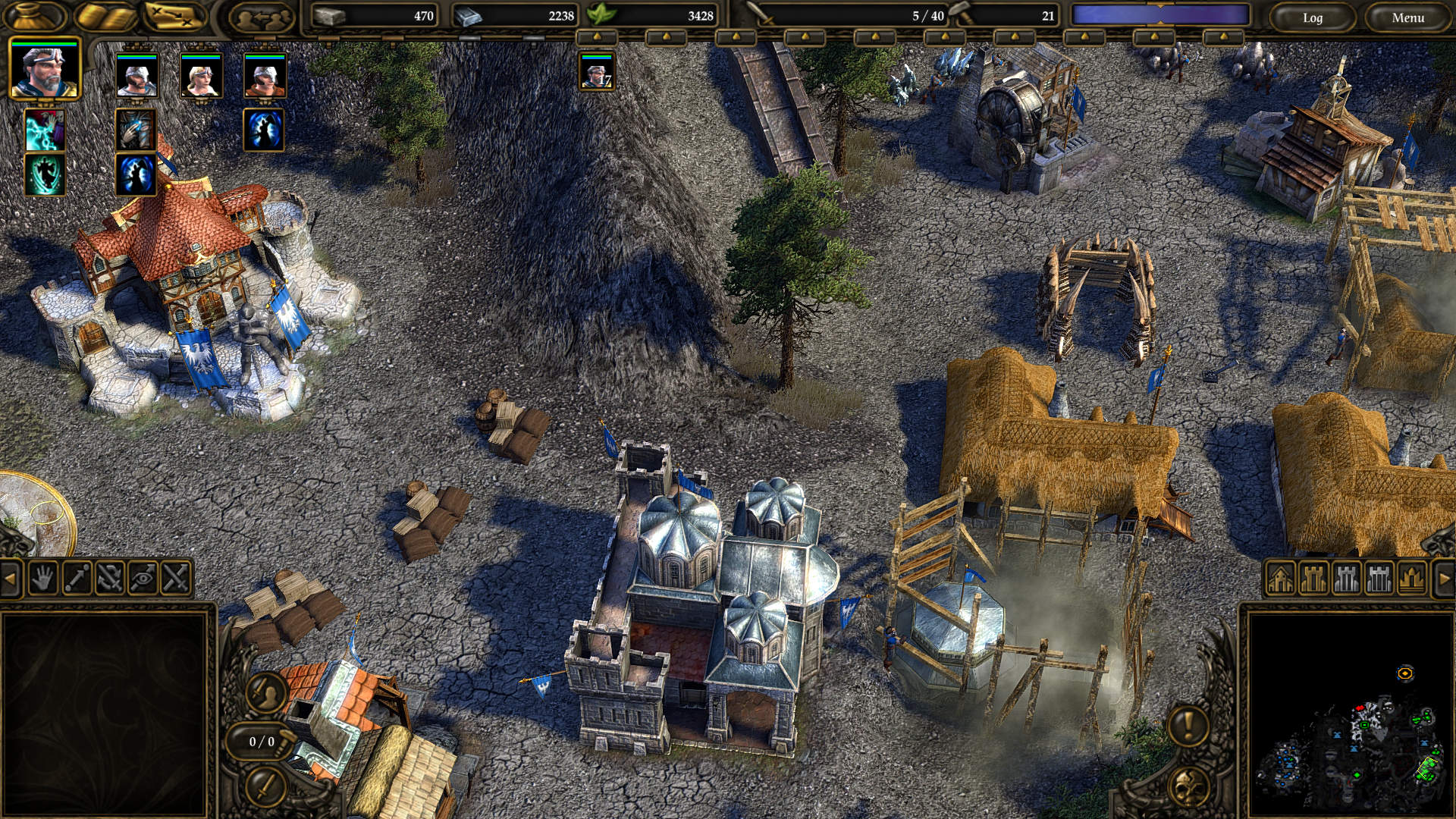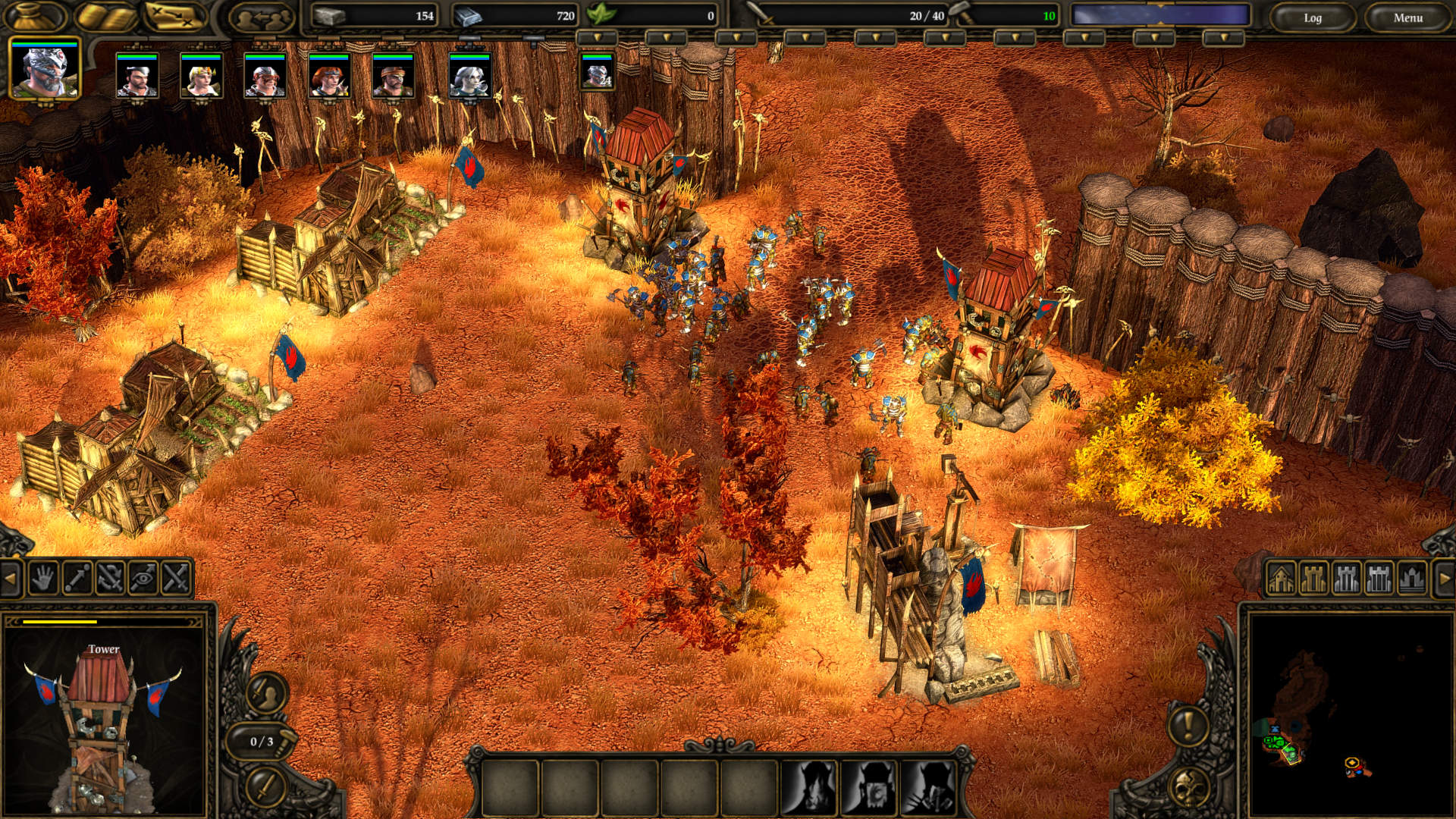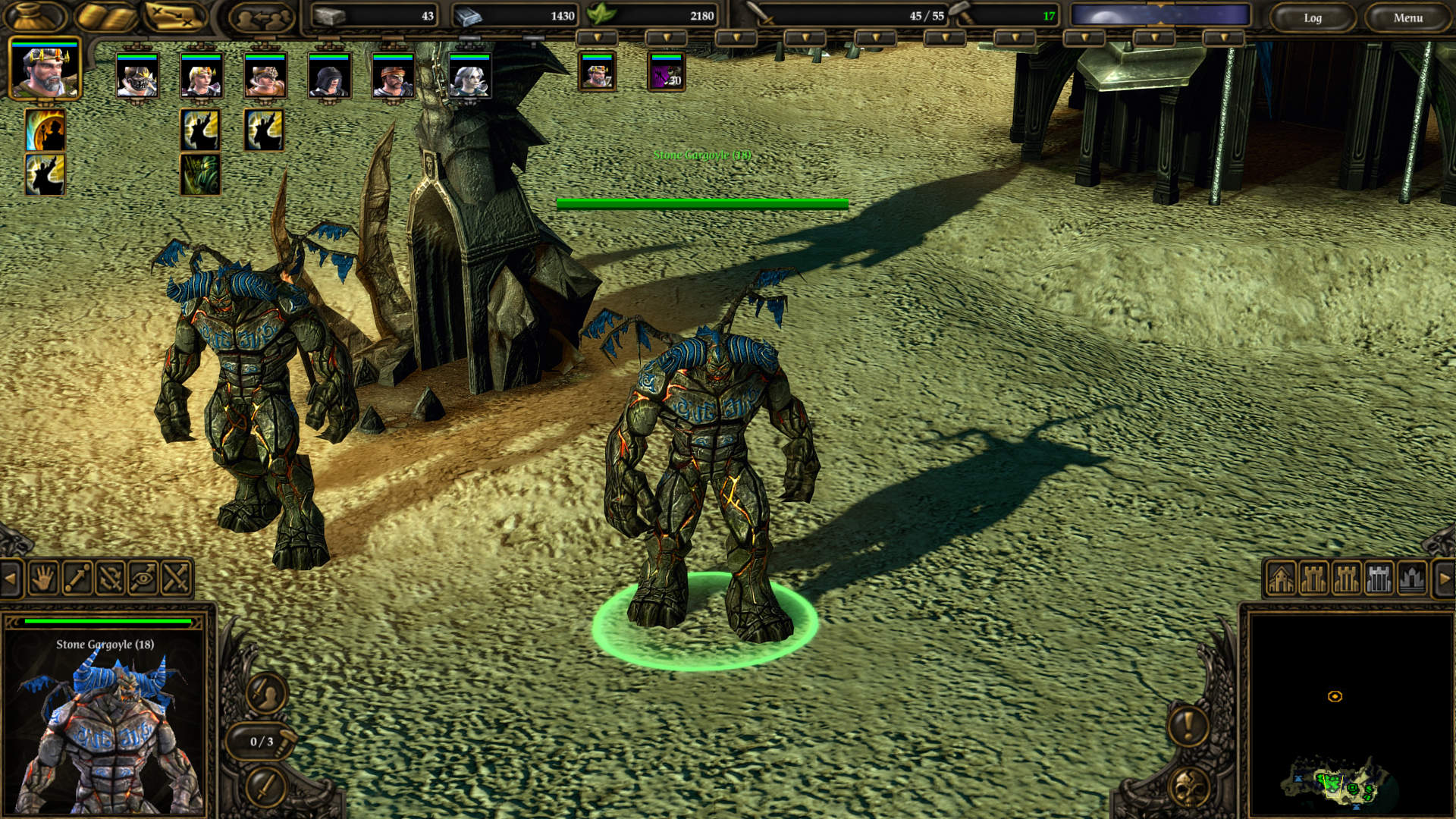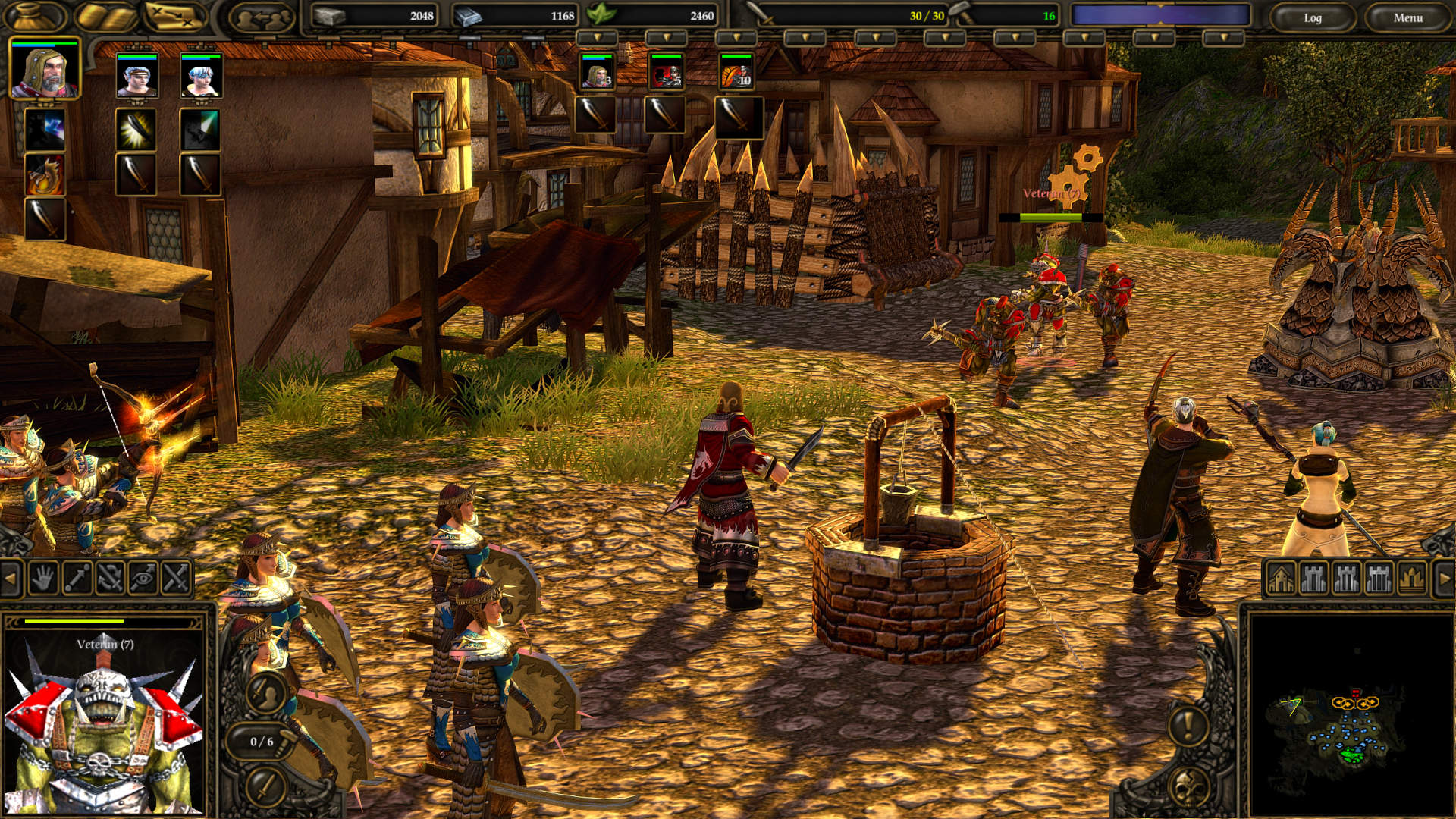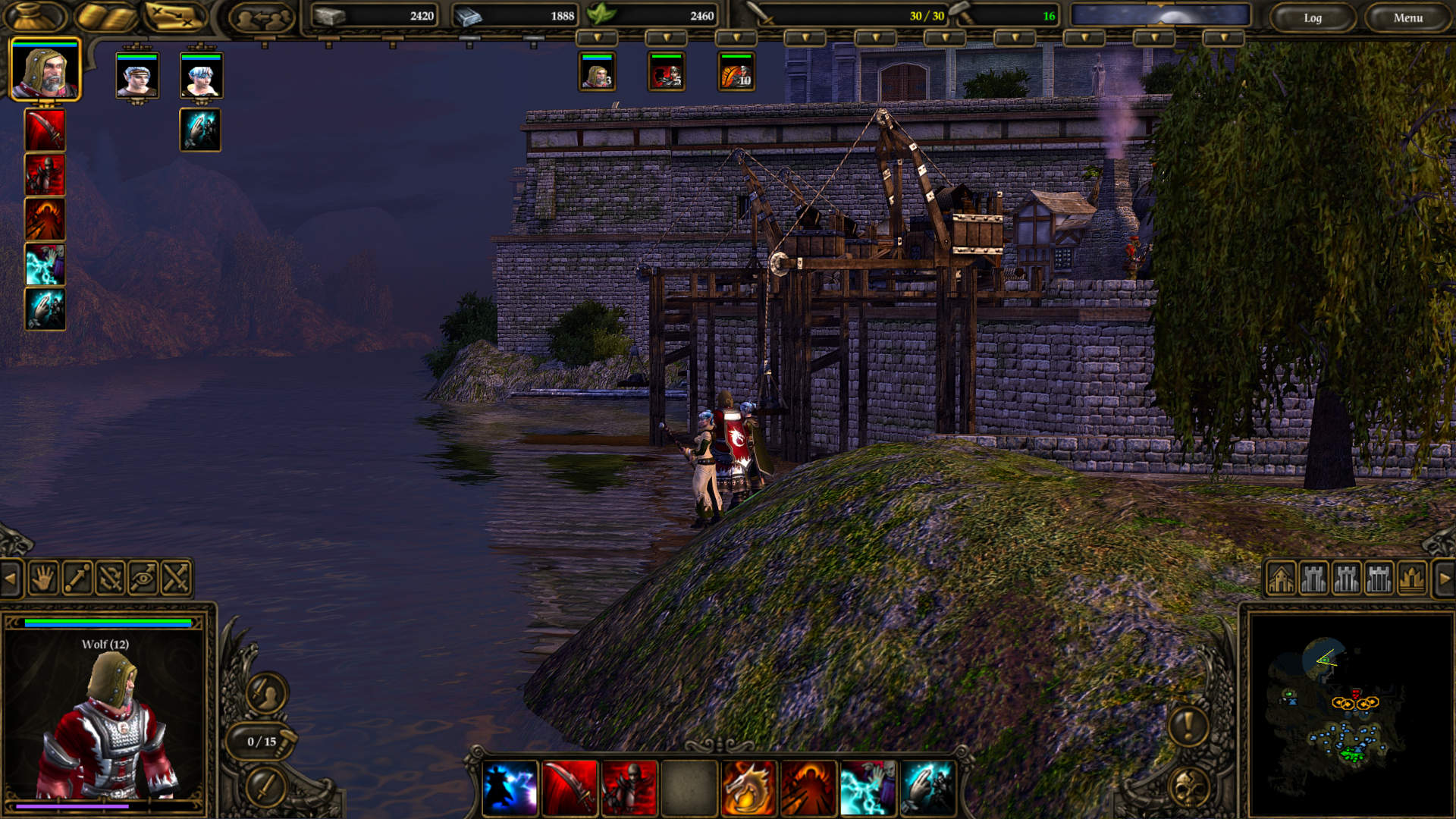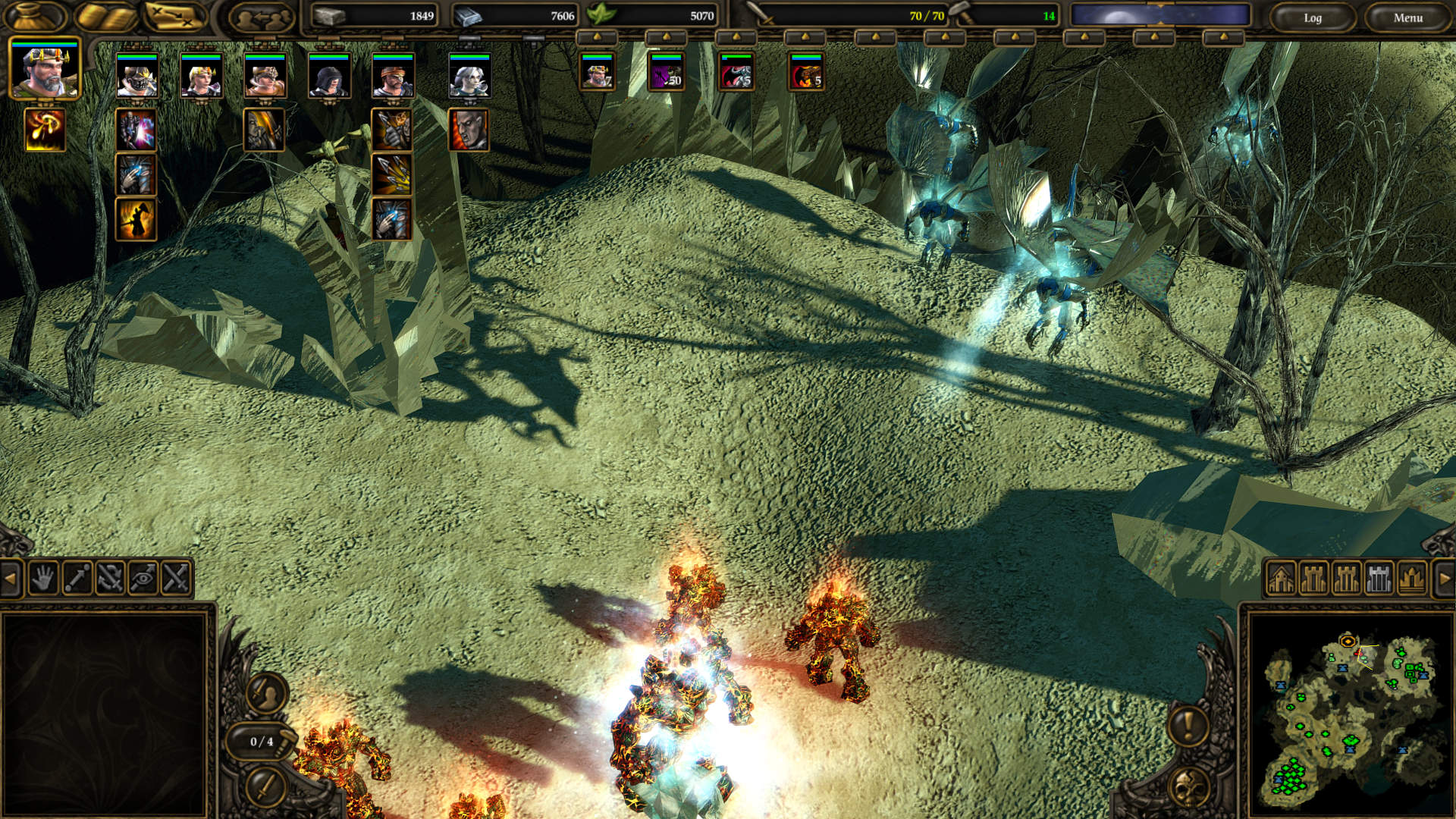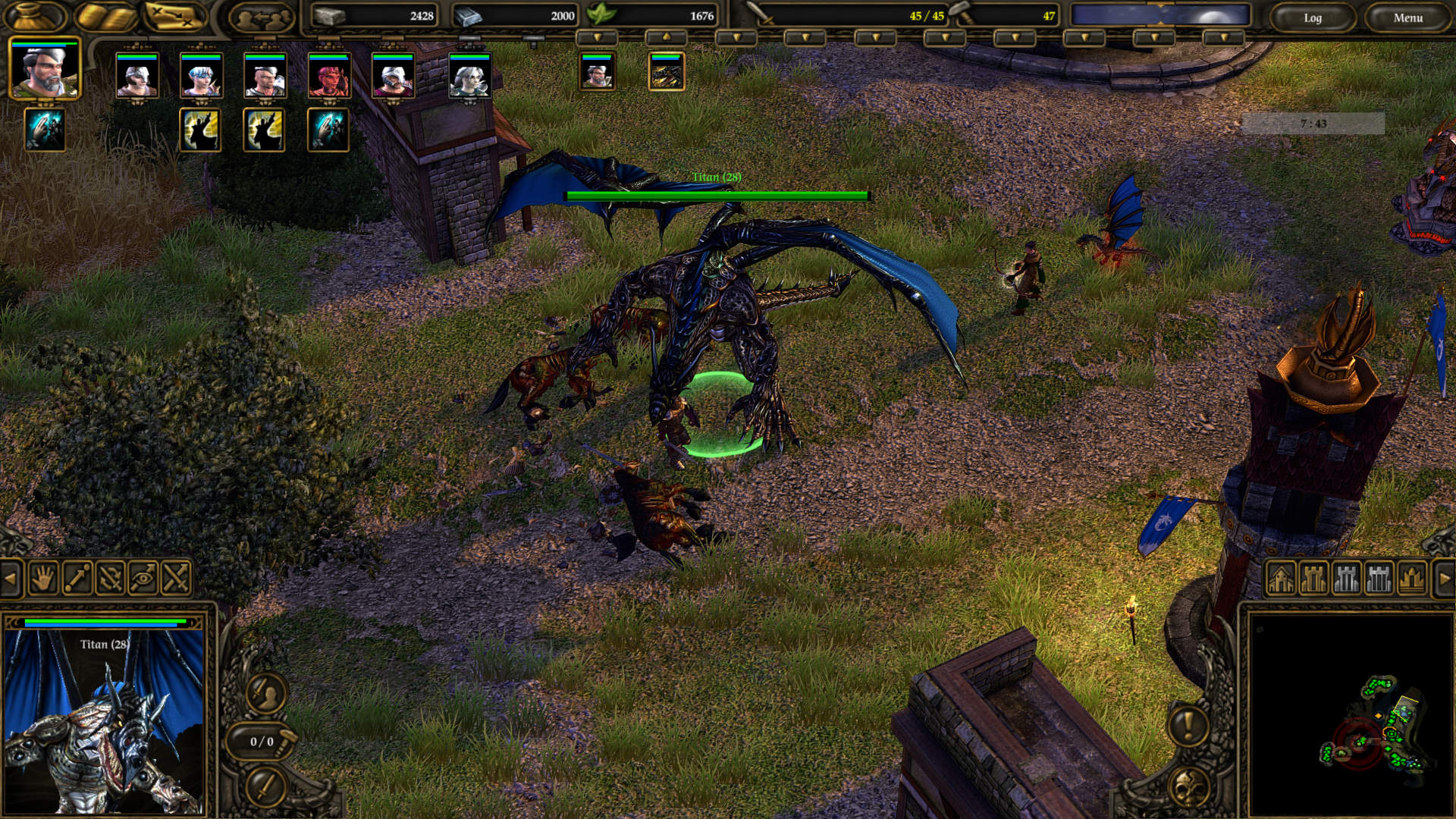Spellforce 2
The first Spellforce was a masterful combination of RPG and strategy. In 2006, the sequel Spellforce 2: Shadow Wars, was released. This sequel stuck to the original formula, while changing some of the base mechanics.
I really enjoy the visuals of this game, so there are plenty of screenshots in this article, be warned!
The game had an expansion released in 2007, Spellforce 2: Dragon Storm. The expansion continued the story of Shadow Wars, as well as introducing a new faction. Two additional stand-alone expansions were released some years later, but the original developer was not involved and as such I want to look at them separately. So in this article, I will only consider the original Spellforce 2: Shadow Wars, and the expansion Dragon Storm. There were some significant changes from the original Spellforce which I want to look at in detail.
This game is a role playing game, meaning that you create a character that gains experience and levels up as you progress through the game. Either through completing the main story quests, or any of the secondary quests that you encounter in your journey. You can choose what kind of skills you want to specialize in, either combat or magic. The skills in this game is arranged in a tree. Each skill opens up two more advanced skills, which open further options. If you want to make a character focused on archery, you would first need to learn Combat. Then you can learn Light Combat Arts, which opens up Ranged Combat. Finally you can choose to specialize between three bow types, Longbows, Recurve bows, or Crossbows. Personally I always play an elemental mage, although I found it to be less satisfying than in Spellforce 1.
Which brings me to the topic of magic. In Spellforce 1, you had to find spell scrolls to learn new spells. A scroll would teach you a spell at a specific level. So even if you know Fireball level 1, it will not improve along with your magic skill. You would need to find a spell scroll with Fireball at a higher level to learn it at a higher level. This meant that you were not guaranteed to find the spells you wanted at the best levels, unless you spent a lot of time grinding some battles. In Spellforce 2 spells and magic are treated the same as combat abilities. When you learn a new skill, it usually comes with an ability. This reduced the number of spells in the game, which I didn't like. The positive side to this is that you don't need to look for scrolls to learn the spells you want. On the other hand, this makes magic less unique since you are essentially getting the same kind of abilities as a character specialized in combat. The major difference is that abilities provided by magic skills are mostly designed to directly deal (or heal) damage, while combat abilities primarily provide combat enhancements by either increasing your damage for a time, or reducing the damage you receive. Both types of abilities require mana to use.
In Spellforce 1, your character had several statistics that you could improve every time you leveled up. In this game there are no statistics, further simplifying character progression. Some people might prefer the more streamlined progression system, but others might find it a bit shallow. So this all comes down to how you prefer progression in RPG's. I suspect fans of action RPG's would be more comfortable with this kind of progression.
The Rune Warriors of old are gone, along with the magic of the now-gone circle mages. Instead, your character now belong to the Shaikan faction. The Shaikan are the result of the magical and alchemical experiments of a mad alchemist who attempted to control life itself. Dragon blood flows through the veins of every Shaikan, which creates a unique bond between all Shaikan people. If a Shaikan dies, they can be resurrected by another Shaikan provided it happens within a couple of minutes after death. Your avatar (which is your character in the game), along with all your companions (which are commonly referred to as heroes), are Shaikan. The Shaikan people have not been mentioned previously in the series, so being a new introduction to the game world, the story will focus a lot on the Shaikan and their history.
A huge part of this game is the RTS elements. Most maps in the game will have you construct a base and command an army. This has had some major changes since Spellforce 1. Just as with the RPG elements, the RTS mechanics seem to have been more steamlined and simplified. The number of resources available to gather have drastically reduced, and instead of increasing supply by spending a specific resource (food), you now construct buildings that give you more army supply. This is more in line with traditional RTS games. In Spellforce 1, you had to find building plans before you were able to construct any buildings. In Spellforce 2 you will simply unlock more buildings and units as you progress through the story. The number of factions has also been reduced. On the other hand, each of the factions essentially consist of three different races, and you need to unlock each race by upgrading your headquarter. Once you have all three races upgraded you will be able to create a Titan, which is an extremely powerful unit just like the Titans in Spellforce 1. Each faction have only one type of defensive tower, but towers can be upgraded three times with race specific bonuses.
The factions consist of The Realm, The Clans and The Pact. In the Dragon Storm expansion, we got a fourth faction, The Shaikan. The Realm is kind of a mix of the three "good" races from Spellforce 1. The three races are the Human, Elves and Dwarves. The human troops are both close combat fighters and crossbowmen. You also get mounted units with the Paladins and Mounted Crossbowmen. Mages ride on gryphons, and can access parts of the map that your normal foot soldiers can't reach. Elven troops consist of Rangers, Druids and Treants. The Treant is the only Realm unit that can detect Shadows, and as such is important when you face such enemies. Lastly is the Dwarven race, which include strong close combatants, as well as catapults. The Clans faction consist of the Orcs, Trolls, and Barbarians. Orcs feature a decent mix of troops, while the Trolls have the powerful Hurler ranged unit, and Fire Catapult. Barbarians have both close combat and ranged units, as well as the Spiritist, which is a magician riding a griffon. The Orcs have the only unit that can detect Shadows, which is the flying Totem. The Pact is the last of the original factions for Spellforce 2. The three races for the Pact is the Dark Elves, Shadows, and Gargoyles. The Dark Elves alone cover most areas when it comes to troops. You have some decent close combat troops, but primarily ranged and magic oriented troops. They also have the Death Knight, which is the only Pact unit that can detect shadows. The Gargoyle race has two flying units, Fire and Ice gragoyles, and the Stone gargoyle which is an ideal siege unit. The Shadows are quite unique units and make for an interesting playstyle. All Shadow units are invisible to the enemy until they attack. The initial attack, which also reveals them to the enemy, deal a huge amount of damage. There are three Shadow units, one that deals with ground units, one for flying units, and lastly one that excel at destroying buildings. The Shadows become almost useless once they are detected, so it is only the first hit from them that is of any real use. Don't leave them in combat, but pull them back and wait for them to become invisible before using them again.
There is a fourth faction that was added in the Dragon Storm expansion. This is the Shaikan faction, which quickly became a favorite of mine. The first Shaikan race is, unsurprisingly, the Shaikan themselves. They have a good mix of close combat and ranged units, as well as some supportive units, the Standard Bearer, and the Blood Mage. All Shaikan units have two upgrades available, but you can only choose one of the upgrades at a time. For example, the Shaikan Marksman can be upgraded to either have Fire Arrows for increased damage, or Salvo Shot so they can fire at up to three enemies at the same time. Next is the Blades race, which have strong units, and in particular a very strong siege unit. Spellforce 1 players will recognize the Blades as the creation of Hokan Ashir. I will not go into spoilers, but there is a connection. Lastly we have the Dragon race, which consist of some flying units. The dragons are quite strong, but take a lot of supply. Personally I just love being able to field an army of dragons and quickly found myself falling in love with this faction. Unfortunately, an army consisting of only dragons is weak against massed units, such as lots of archers.
Spellforce 1 let you spam towers to defend yourself, in Spellforce 2 you can no longer build that many towers in a small area, vastly limiting your ability to hide behind defensive buildings. Instead, you need to rely on a mix of towers and units for defense. Going out early to weaken the enemy is a useful strategy. Resources are limited, and the enemy will usually have some smaller camps. If you take out one or two of the smaller camps, it will open up their resources to you. There are only three different resources in this game. Stone, which is primarily used for constructing buildings. Silver, which is primarily used for hiring troops. And Lenya, which is mostly used for some special troops. Most of the maps will play out in a similar fashion. At first you defend your base with your Avatar and Heroes while you gather resources and build up your base. When you have an army, you begin to explore around your base and find some enemy encampments. Most of the maps have several side quests and other stuff to explore, but such things are usually best left for after you have defeated the enemy. There are also certain maps where you don't get to build an army. On those maps, the game plays a bit more like a party-based RPG. You will rely solely on your heroes and need to make good use of their skills and spells to defeat the enemies you encounter. There are even a few maps which focus a lot more on exploration and dialogue. The city of Sevenkeeps is a very unique map that will take a lot of time to explore, and it is filled with side quests to keep you occupied for quite some time.
The story for both the original Shadows Wars, and the Dragon Storm expansion, is heavily focused on the Shaikan and their role in the world. The Rune Warriors and Circle Mages are no longer central to the story, but there is an increased focus on the backstory of the world. You will encounter some characters from the old games, which also help to create a unified picture of the world in the games. Still, this games stands firmly on its own and you don't need to know Spellforce 1 to enjoy this game.
Free Game Mode makes a return, in which you create a character and then can pick from a large selection of maps. You are free to play any map as often as you want, and in any order that you wish. You pick whatever faction you want to be for the RTS maps, while the RPG maps lets you control only your Avatar and heroes. There is one "Questmap" in which you have a city to explore, and receive quests that will take you to other maps. Here you can hire companions to follow you. This game mode can be played alone, to have a more relaxed way of playing Spellforce 2, or you can play it cooperatively and tackle challenges with a friend or two. Unlike the Spellforce 1 Free Game mode, in Spellforce 2 there are more quests added to give you a sense of purpose beyond just completing maps and leveling up. I can't stress enough just how much I enjoy this game mode, and how it essentially adds countless additional hours into the game. You get to play a map with all the different factions if you want, or just advance quickly with your favorite faction. If you find yourself wanting more levels, you can replay maps to level up more before advancing. It really gives you a lot of freedom to go at the game in a way that you would prefer.
I have to admit that in most aspects, I prefer the original Spellforce 1 over this game. But that does not mean that I dislike this game, in fact I have found myself staying awake for far too long while playing this game. The story and characters, while not on the level of most story driven RPG's, are still interesting enough to make you feel a kinship with them. The graphics are also vastly improved when compared to Spellforce 1, and to my eyes it still looks pretty good. If you like a good fantasy setting, full of lore and different creatures, then this game is bound to appeal to you. The blend of RPG and RTS works really well, and this game executes it in a very satisfying manner. The Dragon Storm expansion is a must have in my opinion as it adds much to both game mechanics as well as story.
Categories: Role Playing Games, Strategy, Real Time Strategy, Fantasy
You need to Log in to comment.
If you don't have an account, then feel free to Create an account
